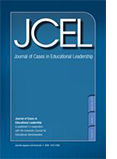Selected Publications
Faculty and associates within the Rural School-Community Partnership Consortium have published on a wide range of topics within the field of rural education.
Books and Chapters
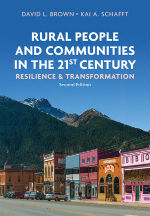 |
Brown, D. L., & Schafft, K. A. (2018). Rural People and Communities in the 21st Century Resilience and Transformation (2nd ed.). Cambridge, UK: Polity. |
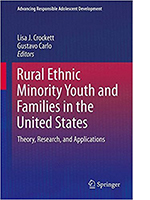 |
Farmer, T.W. & Hamm, J. V. (2016). Promoting supportive contexts for minority youth in low-resource rural communities: The SEALS model, directed consultation, and the scouting report approach. In L.J. Crockett & G. Carlo (Eds), Rural ethnic minority youth and families in the United States. Springer. |
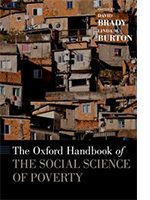 |
Lichter, D.T., & Schafft, K.A. (2016). Rural people and places left behind: Poverty and spatial inequality in the new century. In Brady D., & Burton, L. (Eds.) Oxford Handbook of the Social Science of Poverty (pp. 317-340). Oxford University Press. |
 |
Schafft, K.A., & Biddle, C. (2014). Education and schooling in rural America. Pp. 556-572 in Bailey, C., Jensen L., & E. Ransom (Eds.) Rural America in a Globalizing World: Problems and Prospects for the 2010s. Morgantown: West Virginia University Press. |
More books and chaptersKilleen, K., & Schafft, K. A. (2015). The organizational and fiscal implications of transient student populations in urban and rural areas. pp. 623-63 in H. F. Ladd & E.B. Fiske (Eds.), Handbook of Research in Education Finance and Policy. Revised Second edition. New York: Routledge. Brown, D. L., & Schafft, K. A. (2011). Rural people and communities in the 21st century: Resilience and transformation. Cambridge, UK: Polity. Schafft, K.A., & Jackson, A. (2010). Rural education and community in the twenty-first century. Pp. 1-16 in K. A. Schafft & A. Jackson (Eds.), Rural education for the twenty-first century: Identity, place, and community in a globalizing world. University Park, PA: Penn State University Press (Rural Studies Series). |
Journal Articles
 |
Farmer, T.W., Hamm, J. V., Lee, D. L., Sterrett, B., Rizzo, K., & Hoffman, A. (2018). Directed consultation and supported professionalism: Promoting adaptive evidence-based practices in rural schools. Rural Special Education Quarterly, 37, 164-175. |
|
|
Mette, I., Biddle, C., Mackenzie, S.V. & Harris-Smedberg, K. (2016). Poverty, privilege and political dynamics of rural school reform: Unraveling leadership in invisible America. Journal of Cases in Educational Leadership, 19(3), 62-84. |
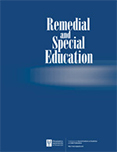 |
Chen, C-C., Hamm, J.V., Farmer, T.W., Lambert, K., & Mehtaji, M. (2015). Exceptionality and peer victimization involvement in late childhood: Subtypes, stability, and social marginalization. Remedial and Special Education, 36, 312-324. |
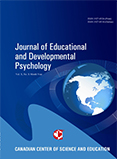 |
Hamm, J.V., Dadisman, K.A., Day, K. M., Agger, C. A., & Farmer, T.W. (2014). The move to middle school: Parents’ Expectations and early adolescents’ adjustment in rural communities. Journal of Educational and Developmental Psychology, 4, 46-65. |
More journal articlesEppley, K., Shannon, P., Azano, A. P., & Brenner, D. (2018). What counts as evidence in rural schools?: Evidence-based practice and practice-based evidence for diverse settings. The Rural Educator, 39(2), 33-37. Azano, A. P., & Tackett, M. E. (2017). Perceptions of teachers and parents on the educational experiences of students with autism in a remote rural community. The Rural Educator, 38(3), 39-54. Azano, A. P., Callahan, C. M., Brodersen, A., & Caughey, M. (2017). Responding to the challenges of gifted education in rural communities. Global Education Review, 4(1), 1-16. Schafft, K.A. (2016) Rural education as rural development: Understanding the rural school-community well-being linkage in a Biddle, C. & Azano, A. (2016). Constructing and reconstructing the “rural school problem”: Rurality and rural education research over the past century. Review of Research in Education, 40(1), 298-325. Byun, S., Irvin, M. J., & Meece, J. L. (2015). Rural-nonrural differences in college attendance patterns. Peabody Journal of Education, 90(2), 263-279. Hamm, J.V., Farmer, T.W., Lambert, K., & Gravelle, M. (2014). Enhancing peer cultures of academic effort and achievement in early adolescence: Promotive effects of the SEALS intervention. Developmental Psychology, 50, 216-228. Petrin, R., Schafft, K.A., & Meece, J. (2014). Educational sorting and residential aspirations among rural high school students: What are the contributions of schools and educators to the rural brain drain? American Educational Research Journal, 51(2), 294-326. Farmer, T.W., Hamm, J.V., Lee, D., Lane, K.L., Sutherland, K.S., Hall, C.M., & Murray, R.M. (2013). Conceptual foundations and components of a contextual intervention to promote student engagement during early adolescence: The Supporting Early Adolescent Learning and Social Success (SEALS) model. Journal of Educational and Psychological Consultation, 23, 115-139. Hamm, J.V., Lambert, K., Agger, C.A., & Farmer, T.W. (2013). Promotive peer contexts of academic and social adjustment among rural African American early adolescent boys. American Journal of Orthopsychiatry, 83, 278-288. Farmer, T.W., Petrin, R.A., Brooks, D.S., Hamm, J.V., Lambert, K., & Gravelle, M. (2012). Bullying involvement and the school adjustment of rural students with and without disabilities. Journal of Emotional and Behavioral Disorders, 20, 19-36. Berry, A., Petrin, R., Gravelle, M., Farmer, T., (2011). Issues in special education teacher recruitment, retention, and professional development: Considerations in supporting rural teachers. Rural Special Education Quarterly, 30, 3-11. Farmer, T.W., Hamm, J.V., Leung, M-C., Lambert, K., & Gravelle, M. (2011). Early adolescent peer ecologies in rural communities: Bullying in schools that do and do not have a transition during the middle grades. Journal of Youth and Adolescence, 40, 1106-1117. Farmer, T.W., Leung, M-C., Weiss, M.P., Irvin, M.J., Meece, J.L., & Hutchins, B.C. (2011). The social network placement of rural high school students with disabilities: Centrality and peer affiliations. Exceptional Children, 78, 24-38. Hamm, J.V., Farmer, T.W., Dadisman, K., Gravelle, M., & Murray, R.A. (2011). Teachers’ attunement to students’ peer group affiliations as a source of improved student experiences of the school social-affective context following the middle school transition. Journal of Applied Developmental Psychology, 32, 267-277. Petrin, R.A., Farmer, T.W., Meece, J.L., & Byun, S-Y. (2011). Interpersonal competence configurations, attachment to Farmer, T.W., Hamm, J.V., Petrin, R.A., Robertson, D.L., Murray, R.A., Meece, J.L., & Brooks, D.S. (2010). Creating supportive classroom contexts for academically and behaviorally at-risk youth during the transition to middle school: A strength-based perspective. Exceptionality, 18, 94-106. Farmer, T.W., Irvin, M.J., Sgammato, A., Dadisman, K., & Thompson, J. H. (2009). Interpersonal competence configurations in rural Appalachian fifth graders: Academic achievement and associated adjustment factors. Elementary School Journal, 109, 301-321. Farmer, T. W., Dadisman, K., Latendresse, S. J., Thompson, J., Irvin, M. J., & Zhang, L. (2006, September 15). Educating out and giving back: Adults’ conceptions of successful outcomes of African American high school students from impoverished rural communities. Journal of Research in Rural Education, 21(10). Farmer, T. W., Irvin, M. J., Thompson, J. H., Hutchins, B. C., & Leung, M.-C. (2006). School adjustment and the academic success of rural African American early adolescents in the Deep South. Journal of Research in Rural Education, 21, 1 – 14. Schafft, K. A. (2006). Poverty, residential mobility and student transiency within a rural New York school district. Rural Sociology, 71(2), 212-231. Schafft, K. A., Alter, T. R., & Bridger, J. (2006). Bringing the community |
